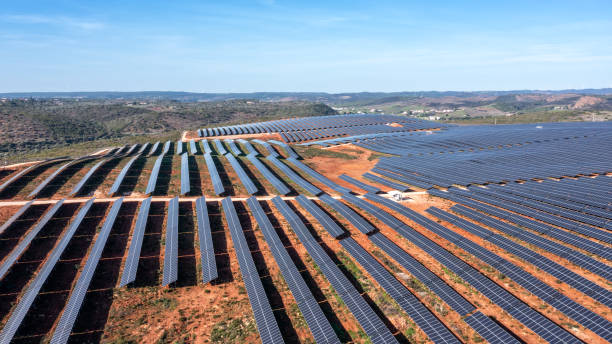News /
Solar energy to be paired with agriculture
2022-12-28
Six projects that seek to explore the mutual benefits of co-locating solar energy production and agriculture have recently been awarded a combined $8 million by the United States Department of Energy. At present, only 2% of solar installations in the US are situated alongside crops or pollinator habitats. Through the Foundational Agrivoltaic Research for Megawatt Scale (FARMS) funding program, researchers will examine multiple configurations of solar systems, different cultivation methods, and various soil and environmental conditions.
The six projects include assessing horticulture and beekeeping at existing sites, creating decision support tools for farmers and stakeholders, conducting crop and grazing trials at two testbeds, understanding community perceptions towards agrivoltaics, identifying barriers to agrivoltaics implementation, and researching tailored solutions for high-latitude underserved communities.

Research at the National Renewable Energy Laboratory has highlighted the potential ecological and agricultural benefits of improving agrivoltaic practices. This funding will provide a platform to develop replicable models that could open up new economic opportunities while reducing land-use conflicts as well. Iowa State University, Rutgers University, the Solar and Storage Industries Institute, the Ohio State University, the University of Alaska Fairbanks and the University of Arizona are all involved in these projects and will work to develop resources to help farmers understand best practices.
Six projects that seek to explore the mutual benefits of co-locating solar energy production and agriculture have recently been awarded a combined $8 million by the United States Department of Energy. At present, only 2% of solar installations in the US are situated alongside crops or pollinator habitats. Through the Foundational Agrivoltaic Research for Megawatt Scale (FARMS) funding program, researchers will examine multiple configurations of solar systems, different cultivation methods, and various soil and environmental conditions.
The six projects include assessing horticulture and beekeeping at existing sites, creating decision support tools for farmers and stakeholders, conducting crop and grazing trials at two testbeds, understanding community perceptions towards agrivoltaics, identifying barriers to agrivoltaics implementation, and researching tailored solutions for high-latitude underserved communities.

Research at the National Renewable Energy Laboratory has highlighted the potential ecological and agricultural benefits of improving agrivoltaic practices. This funding will provide a platform to develop replicable models that could open up new economic opportunities while reducing land-use conflicts as well. Iowa State University, Rutgers University, the Solar and Storage Industries Institute, the Ohio State University, the University of Alaska Fairbanks and the University of Arizona are all involved in these projects and will work to develop resources to help farmers understand best practices.